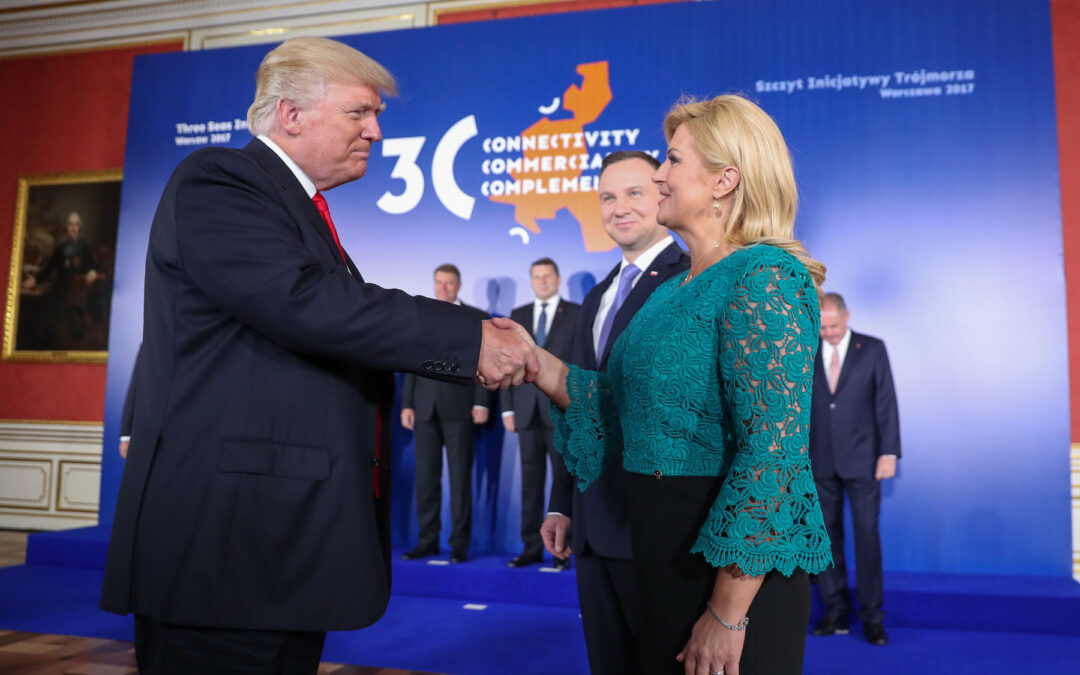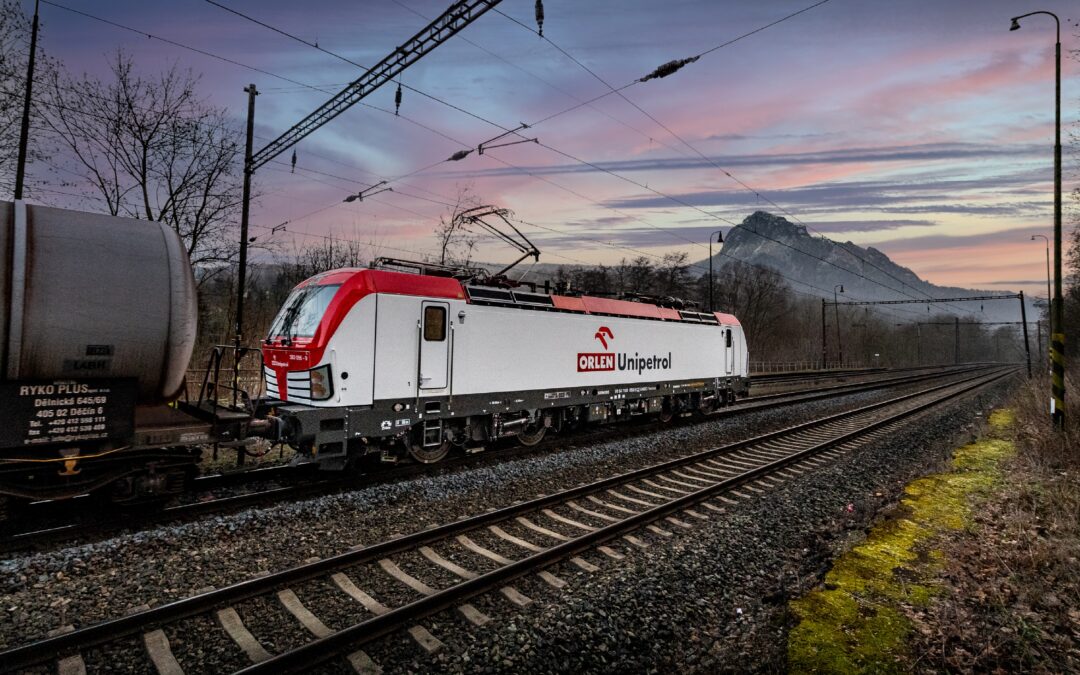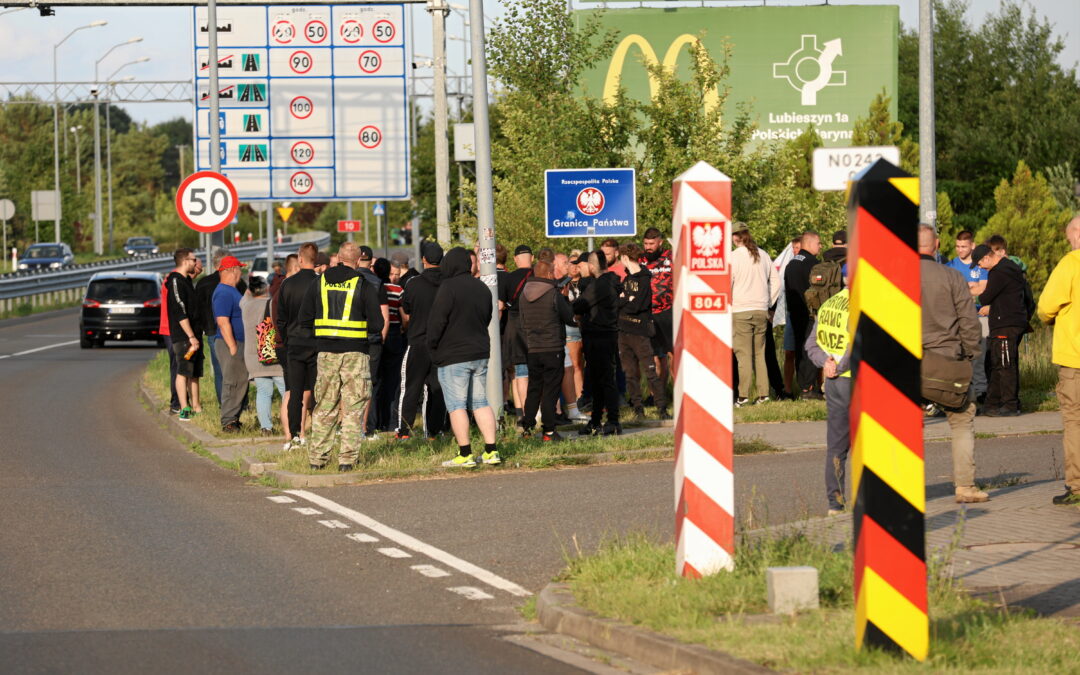By Grzegorz Lewicki
The Three Seas Initiative, covering a region between the Adriatic, Baltic and Black Seas, is crucial to the future of global security. Much like West Germany during the Cold War, it can serve as a cushion against geopolitical pressure from the east.
In 2017, when the recently elected president of the United States, Donald Trump, chose to attend a summit of the Three Seas Initiative (TSI) in Warsaw before he had visited western European allies like the UK, France and Germany, a number of commentators took note.
The Associated Press sought to explain “why Trump visits ex-communist nation before UK”, breaking with the tradition of visiting the most prominent European capitals first. “Why Poland first?” asked the BBC in the same spirit.
Yet while the outgoing US leader certainly had a soft spot for conservative governments such as Poland’s, his support for the TSI has genuine strategic and economic benefits for the US – as was suggested by November’s bipartisan support in Congress for US involvement in the initiative.
Moreover, far from irrelevant or marginal, many insiders have argued that the Three Seas Initiative is becoming one of the most important European projects after the EU and NATO.
Introducing the Three Seas
The “Three Seas” refers to the region located between the Adriatic, the Baltic and the Black seas. Launched in 2015, the initiative promises to forge a new transatlantic pact, and bolster the EU’s security. The alliance’s members currently include Austria, Bulgaria, Croatia, Czechia, Estonia, Hungary, Latvia, Lithuania, Poland, Romania, Slovakia, and Slovenia.
More countries, such as Germany or Ukraine, have expressed interest in joining. Together, the current members constitute roughly a third of the EU’s territory, a quarter of its population, and one fifth of its GDP.
The #ThreeSeas Initiative is designed to promote cooperation between 12 EU Member States and their partners.
Do you know who are the members of the initiative?
You will find them between the Baltic, Black and Adriatic seas: 🇦🇹, 🇧🇬, 🇭🇷, 🇨🇿, 🇪🇪, 🇭🇺, 🇱🇻, 🇱🇹, 🇵🇱, 🇷🇴, 🇸🇰 and 🇸🇮. pic.twitter.com/7hiEZCnGCy— Three Seas Summit and Business Forum (@3seaseu) August 25, 2020
In a nutshell, the TSI aims to promote large-scale infrastructural, digital and energy-related investments in the eastern EU states cooperating with the US, and potentially also future partners such as India.
Together, the TSI countries want to strengthen European security in the context of regional worries, such as the growing influence of Russia. In order to do so, these members want to complement the EU’s efforts to first catch up infrastructurally with western Europe by adding another layer of investment, thus distancing themselves from their communist-era legacies of dilapidated roads, outdated technology and unsustainable energy sources.
According to Ian Brzezinski and James Jay Carafano, writing in The National Interest, the TSI gives Washington “an opportunity to tangibly help some of its closest allies help themselves, counter malign Russian and Chinese influence in Central Europe, and position the US Treasury for a healthy return on investment”.
In other words, in exchange for its financial and political backing, America will be making the burgeoning region more dependent on its own technologies and energy supply.
At @MunSecConf @SecPompeo announces that the US plans to support the Three Seas Fund for Central Europe with a sum of $1 billion. The money will go into energy infrastructure. What was not said is that it will happen if all 12 members committ financially to the fund #MSC2020 pic.twitter.com/WbiJh1pDyq
— Prof. Katarzyna PISARSKA (@KPisarska) February 15, 2020
By propagating its technologies, the US may hope to hook the region for years to come and make it more strategically predictable. By providing liquified natural gas (LNG) to allow CEE states to diversify their energy sources away from Russian oil and gas, the US is setting a foothold in the neighbourhood.
Turmoil at the borderlands
The need for increased security is inherent in the geography of the Three Seas. The initiative’s members form the eastern boundary of the so-called West – both in terms of identity and geographical borders.
Further east there is, firstly, Russia, which is aggressively destabilising its neighbourhood by waging a hybrid war in Ukraine, linking military occupation with disinformation and ideological diversion. Its short-term goal is to delay both Ukraine and Belarus’s convergence with the West in terms of economy and values, by muffling democracy and sowing disinformation.
Secondly, there is Turkey, which has abandoned the path of openness and reinstated the language of hard power. Increasingly dependent on Russia’s technology and authoritarian playbook, Turkey is becoming a headache for Europe with its releasing migration waves to Greece and Bulgaria and conducting naval drills around EU waters.
Thirdly, there is China, which has set its gaze on digital markets, as well as trade and infrastructure through its sprawling Belt and Road Initiative. Europe is currently eager to cooperate with China, but according to the USA, with every router sold China is building an underlying intelligence network. Hence American willingness to participate in the digital dimension of the TSI.
These examples show geopolitics as a tangle for Central and Eastern Europe. Countries on the EU’s borders can justifiably be concerned about their security. Much like West Germany during the Cold War, the Three Seas region could end up as a buffer for the rest of the EU in the event of future international crises. Hence the warm welcome for the TSI, which wants to make its members more sustainable and self-sufficient – as fast as possible.
US national security advisor @AmbJohnBolton has completed an unprecedented tour of Kiev, Warsaw, Chisinau and Minsk, as part of a 'bid to pivot Eastern Europe away from Russia', making it a 'buffer zone' against both Moscow and Beijing, writes @AlJazeera https://t.co/WtX4XLASaZ
— Notes from Poland 🇵🇱 (@notesfrompoland) September 3, 2019
Unfortunately, in spite of previous European policies, the needs for strategic investments in the Three Seas region of the EU amount €600 billion. It is a huge developmental gap that may hinder the wellbeing of the entire EU in the long run.
A September report by the International Monetary Fund finds that if the efficiency of public investment in the TSI region were to rise to western European levels and non-tariff trade barriers were reduced by 5%, the dividend from long-term investment would almost double.
The report estimates that to close the infrastructure gap between TSI states and the most advanced European economies (EU15) by just half by 2030 would cost 3-8% of the region’s GDP per year.
From early summits to the TSI Fund and TSI Index
The Three Seas Initiative was born of post-communist Europe’s specific fears and hopes. States on the EU’s borders tend to be more sensitive detectors of early security threats: whereas the western EU has started to speak of the community’s insufficient spending on technology, defence and logistics only recently, the eastern EU has been talking about this for a long time already.
This led to the first Three Seas Initiative summit in Dubrovnik in 2016, setting off a tradition of annual meetings, with the 2017 gathering attracting international attention when Trump attended.
The incoming US president, Joe Biden, is set to uphold America’s backing for the TSI. In this spirit, House Resolution 672 was passed by the US Congress in November to reiterate America’s political support for the TSI and its willingness to commit $1 billion to the project.
Today a US delegation attends every TSI summit as an observer. In the same way, the European Commission, as well as financial institutions such as the World Bank, the European Investment Bank, and the European Bank for Reconstruction and Development, all send their representatives.
According to the then president of European Commission, Jean-Claude Juncker, speaking at a TSI summit in 2018, the initiative is a “catalyst for the cohesion and convergence of the EU and for the strengthening of the transatlantic link”.
In 2019, the Three Seas Investment Fund (3SIIF) was created to attract global capital and inject funds into regional companies. The current members of the fund include Estonia, Hungary, Poland, Romania, Slovenia, Latvia and, as of December 2020, also Bulgaria. Lithuania and Croatia are also set to join.
"The Three Seas Initiative- catalyst for cohesion & convergence of the EU and for strengthening of the transatlantic link," @JunckerEU said.
The Commission is a big contributor to investments in connectivity & infrastructure development in the region. https://t.co/ONDbPkqA3Z— Estefania Ribeiro (@EstefaniaRibei3) September 27, 2018
So far the fund, which is overseen by the Polish Development Bank (BGK), has invested in two entities: Cargounit, which is the largest Polish locomotive leasing business in CEE, and Greenergy Data Centres, an Estonian service based around renewable energy. The investment plans for the following years are not public, yet the IMF casts them as the kind of infrastructural undertakings that will drive post-Covid recovery across the EU.
Another tool is the Three Seas Exchange Index, CEEplus, which provides daily information to investors on a package of more than a hundred of the largest and most liquid stocks listed on regional exchanges.
Bumps along the road
At the outset of the TSI, the project faced heavy backslash. Russian state media, such as Russia Today, have presented it as the product of Central and Eastern European anti-Russian obsessions. Some coverage has also cast the TSI as a competitor to the EU, feeding into fears it could divide and destabilise the bloc. In 2017, Reuters reported “unease” in Brussels ahead of Trump’s visit to the Three Seas Summit.
Berlin took a while to come around to the TSI too. Deutsche Welle last year described the country’s initial attitude as “disinterest verging on distrust”. For one, Germany’s partnership with Russia on a pipeline project, Nord Stream 2, which will bypass CEE countries, does not square with the eastern push for connectivity.
Meanwhile, Washington’s moves to introduce its American LNG into the TSI region will shake up the regional dynamic, potentially threatening German interests.
It also seems that another reason for the initial scepticism towards the TSI is a cultural bias apparently present in western Europe. Larry Wolff, author of Inventing Eastern Europe, argues that ideas originating in CEE are frequently a priori shrugged off as inferior and divisive. This stereotype may have fuelled the narrative that the TSI would clash with – rather than complement – the EU’s functions.
It seems, however, that mutual distrust is no longer a problem, because the EU has already embraced the TSI as a project beneficial for Europe. In 2018, Germany’s foreign minister Heiko Maas said that his country would seek permanent membership of the TSI.
Time for injections
But for now, the most important goal for the initiative is to bolster its investment fund. After the 2020 TSI summit in Tallinn, additional money was pumped into the fund, which has gathered €750 million of its targeted €3-5 billion.
The next Three Seas Summit, that will take place in Sofia, Bulgaria in 2021, will most likely witness the announcement of further financial injections into TSI’s money bag.
#ThreeSeas Initiative Investment Fund has successfully raised an additional €20 million of commitments, invested by the Bulgarian Development Bank. Bulgaria joins Poland, Romania, Estonia, Latvia, Slovenia and Hungary as cornerstone investors.https://t.co/aaRY8hKqQY
— Three Seas Summit and Business Forum (@3seaseu) December 18, 2020
According to Beata Daszynska-Muzyczka, head of BGK bank, investment in TSI may be the second most needed type of injections in Europe right now, after the COVID 19 vaccine.
Whereas the vaccine will increase the everyday safety of our societies, TSI investments will increase the geopolitical safety of the entire European Union – and provide a new transatlantic opening in the process.
Main image credit: Krzysztof Sitkowski/KPRP/Prezydent.pl





















